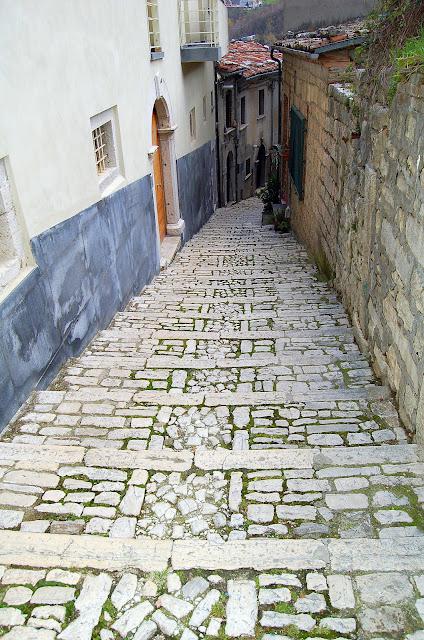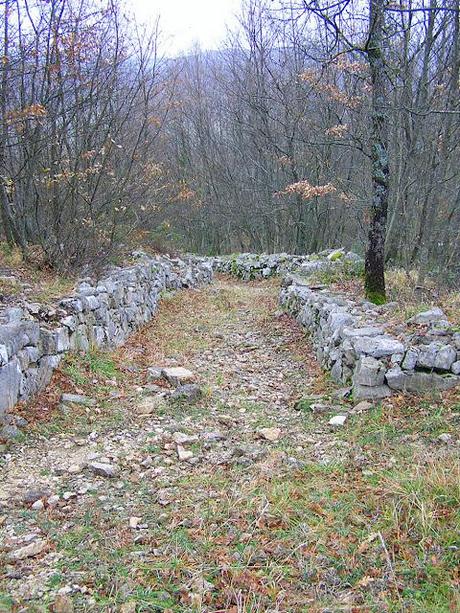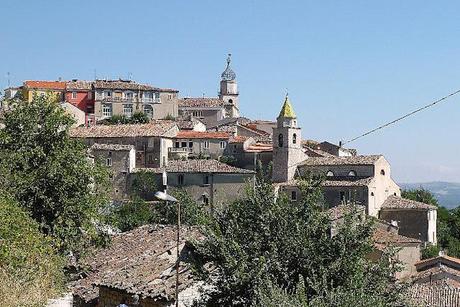
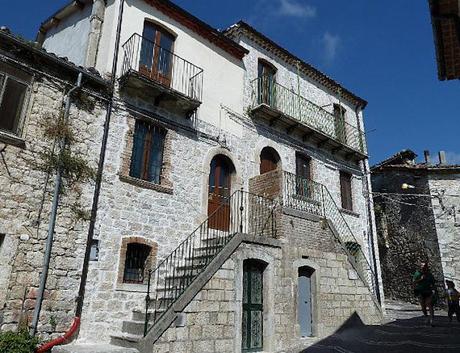
During the visit to the archaeological area of Sepino we get the impression of living an adventure among the places of a typical ancient Roman town. Don’t missing practically nothing. Everything is well kept and the place, among the wonders of nature of Molise, is really impressive.
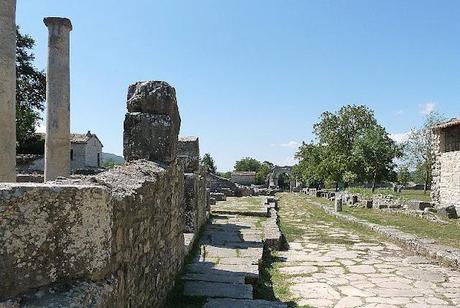
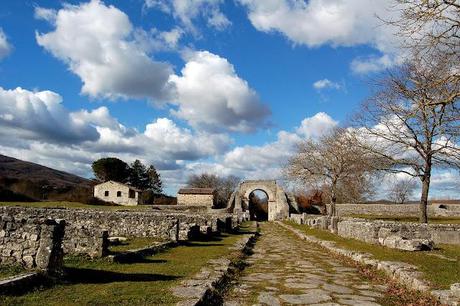 Entering through the ancient streets
and the remains of the sunset and buildings we feel a bit like Indiana Jones,
searching for a treasure lost in time.
Entering through the ancient streets
and the remains of the sunset and buildings we feel a bit like Indiana Jones,
searching for a treasure lost in time.
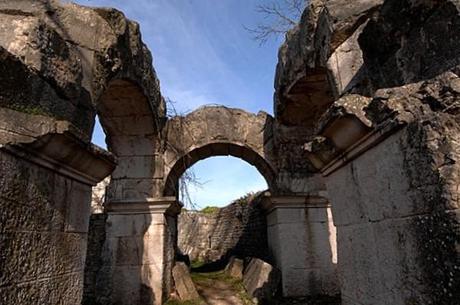
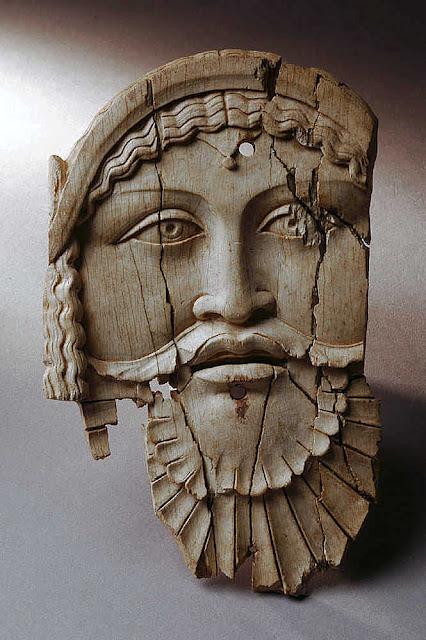
Even today for access to the old "municipium" must pass through the walls of the four ports arranged in the typical grid plan of the Roman city, in which the major roads form a large cross functional of a rapid movement of soldiers’ troops.
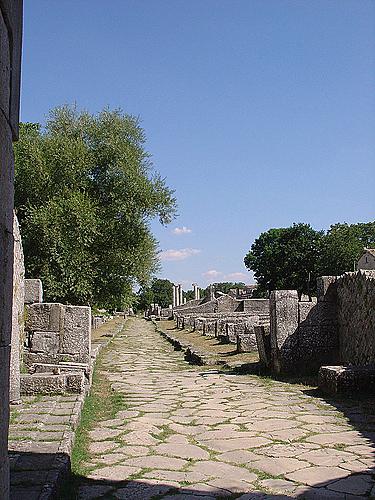
The best preserved door is Boiano Gate, on which we find a carved male figure that someone identifies with Hercules. Still today, like many centuries ago, Boiano Gate is crossed by groups of sheep or cows during the characteristic transfer of the cattle to pasture.
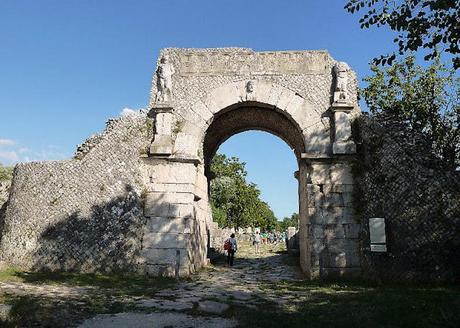
Assisting to their passage, first along the ancient decumanus, then under the arch of the door, is a truly memorable experience. Past the entrance, on either side of the road we find numerous ruins of buildings (probably houses).
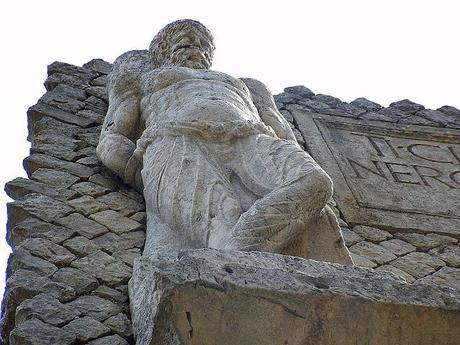
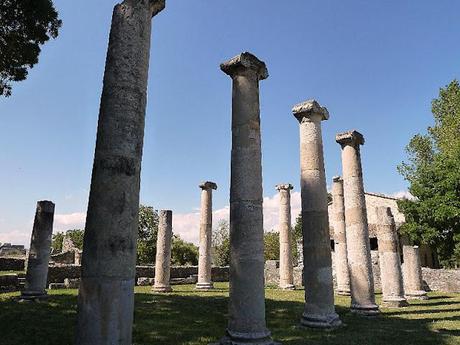
But it’s in the area of the forum which are some of the most important public buildings: the macellum, the old market, the temple and basilica, with its distinctive Ionic columns. The forum is remarkably well preserved, as one of the oldest fountains: the "Fountain of the Snout." (La Fontana del Grifo)
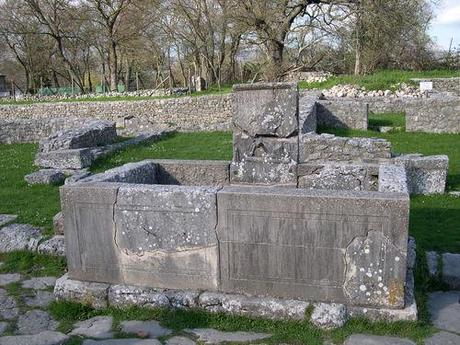
Among the many buildings, you can admire the "home of Samnite impluvium", the remains of a water mill and another house, in which you can see some terracotta pots, probably used for storing oil . The most monumental structure is the theater, at the north side of the city, behind the walls. The orchestra and the lower parts of the bleachers and are well preserved, but, instead of the upper stands, is a complex of rural buildings, also built using materials and stones of the theater itself.
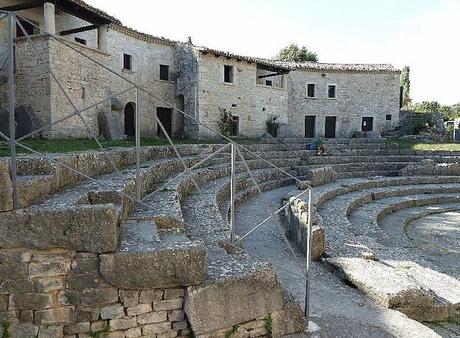
FAMOUS NAMES AMONG THE CITY OF DEADS
As in any ancient Roman city, even in Saepinum cemeteries are located along the streets, just outside the city. Outside Porta Boiano we see one of the most important funerary monuments: the mausoleum of Numisi, whose owner was a certain Publius Numisio Ligo.
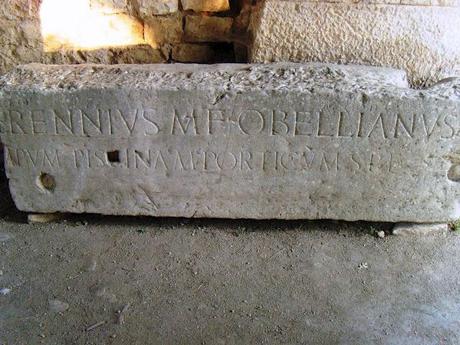
On the other side of town, just outside Benevento Gate, there is another great mausoleum, the one of Marsi’s family, belonging to Ennio Marso (who built the fountain of the snout). The inscription records the owner in all his offices and show signs of power: the beams and the curule seat, symbol of the judicial authority of the magistrates.
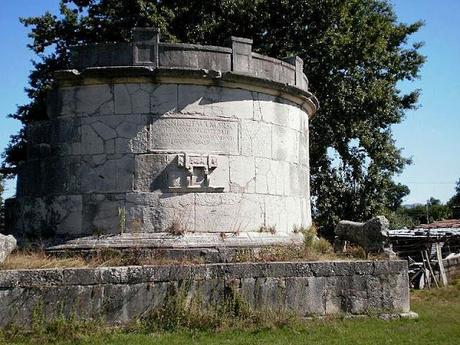
BEFORE ALTILIA AND SAEPINUM .....
Among the ruins of Saepinum and the contemporary town (Altilia Sepino, typical Medieval city) we can visit the remains of another city, even more ancient: Saipins, dating from the Samnite period (fourth century BC).
Who has the perseverance to venture on foot through the lonely country roads, going to Terravecchia, will touch the mysterious remains of megalithic defense walls and the original entrance doors.

Among these is the so-called "Postierla del Matese" one of the four access gates open in the wall perimeter of the Ocre Saipinats, a stronghold of the ancient Samnites .
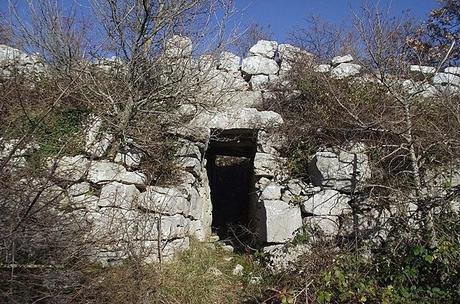
Even if the place is a bit hard to reach, the effort is definitely rewarded by the natural beauty and the silence in which we are completely immersed.
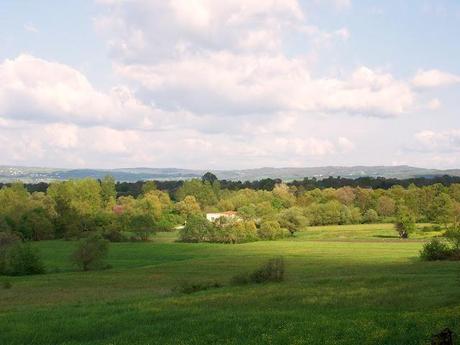 The ancient Saipins
(today Terravecchia), is located at the top of a hill, and was
conquered by the Consul Papyrus Cursor,
as handed down by Livy, in 293 a. C .
The ancient Saipins
(today Terravecchia), is located at the top of a hill, and was
conquered by the Consul Papyrus Cursor,
as handed down by Livy, in 293 a. C .

The few survivors left the city reduced to rubble and came down to the valley, in Saepinum.
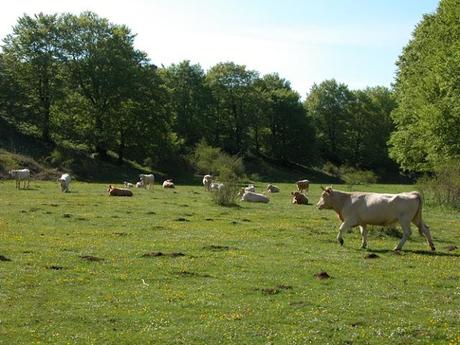
Here they choose to stay, beside the path which joined the side of Boiano with that of Benevento. They established a farming village that has survived for soil fertility, both for business related to the pastoral economy.
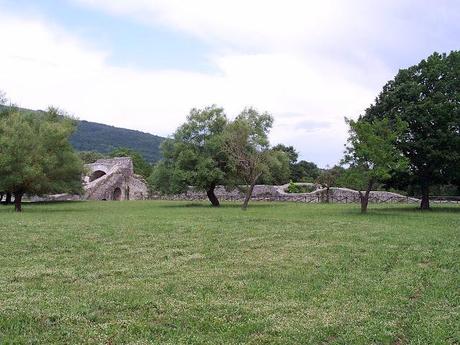
In the first century. d. C., after the final defeat of the Samnites and the Romans’ conquest of the small Saepinum village, this became an important rural town and resort.
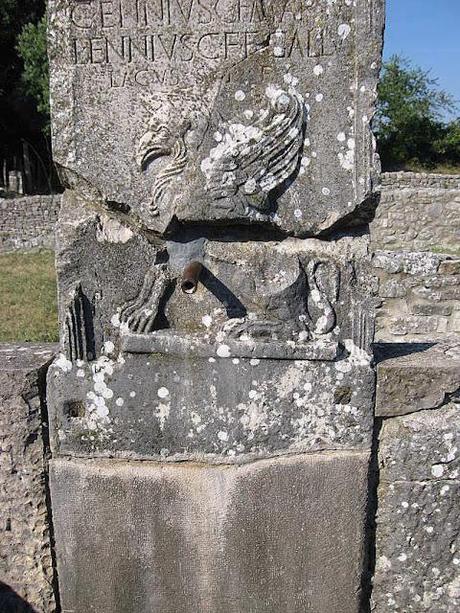
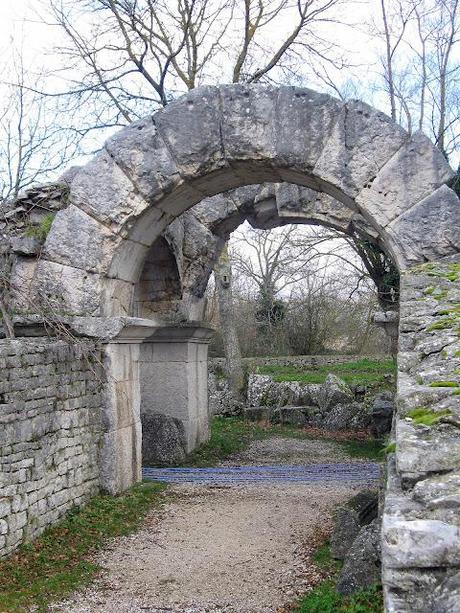
THE SPA AND WATER HEALING ...
From the top of Porta Boiano (Boiano Gate) we have a fantastic view of the city. Here is one of three spas found up to now. Still is visible the mouth of the oven, the suspensurae (the columns on which was the floor, below which circulated hot air) and tubules (the pierced bricks applied to the walls for circulation of heating).
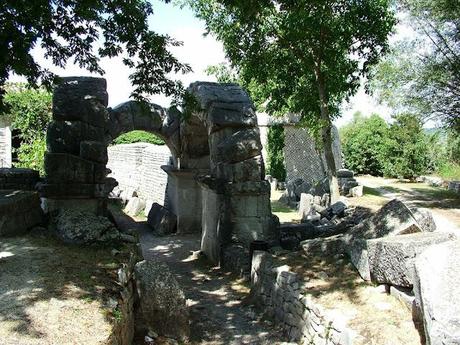
In addition to these spas, there were found two more: one along the stretch of wall that from Terravecchia Gate brings to Benevento Gate, built in a rural hamlet, with still visible suspensurae; and another along the decumanus, overlooking the square with a portico, which is also characterized by curved walls. Well, Saepinum was born in a place full of water.
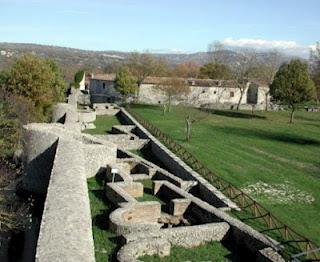
It’s been easy to connect the Roman aqueducts, from the ridge Appennine mountains to the civic water network, grafted on some towers along the tank walls.
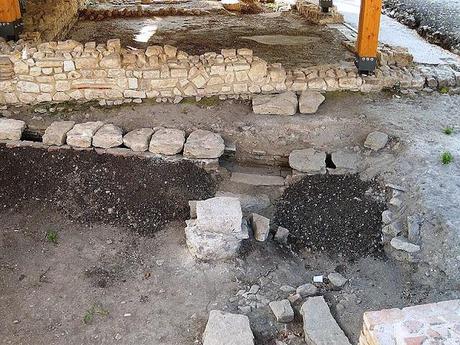
In imperial times (the time of Augustus), this town became a holiday resort for eminent personalities.

The water were increasingly being used both in public and in private ponds, at the center of social life, fun and healing of the Romans.
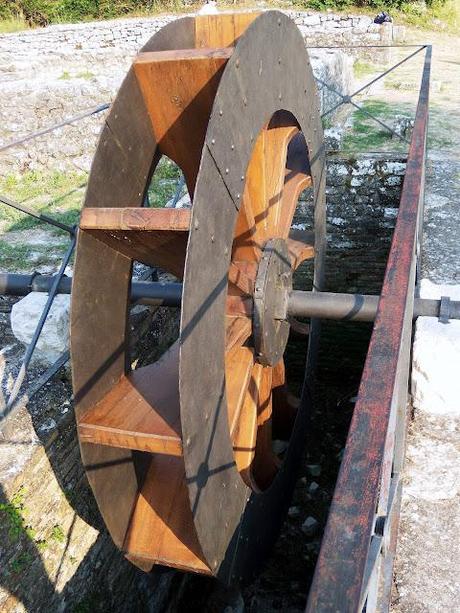
The cult of the water, here began over 2000 years ago, has never stopped.

Even today the baths of the Three Fountains, placed on the mountain just above Altilia, attract tourists and residents whose, as ancients inhabitants, can benefit from the therapeutic properties of special water sources.
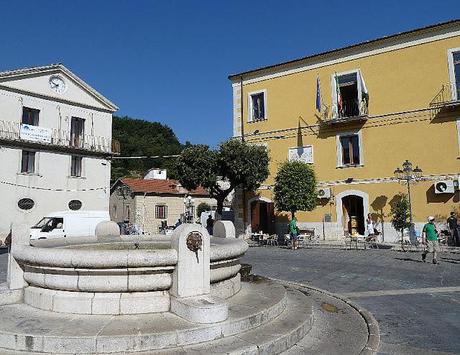
SUGHETTO CON PALLOTTE CACE E OVA Sauce with cheese-balls

Ingredients Serves 4:
cheese-balls
3 tablespoons of stale crumbled bread
300 grams of ricotta cheese
3 eggs
salt
pepper
2 tablespoons of grated Parmigiano cheese
Sauce
250 grams of peeled tomatoes
1 half onion
1 bell pepper cut into thin slices
½ cup extra virgin olive oil
salt
Preparation: Cut an onion very thin, let it brown in a saucepan over low heat with oil, salt and a little water. Add peeled tomatoes and the slices of pepper and let the sauce cook for 20 minutes.
Prepare meatballs with bread crumbs, eggs, Parmigiano and ricotta cheese. Use a spoon and a fork to shape the cheese-balls. Put them in tomato sauce, then let it cook for 15 minutes, with low heat and covered container. Serve the cheese-balls hot, accompanied by plenty of sauce and slices of homemade bread.
